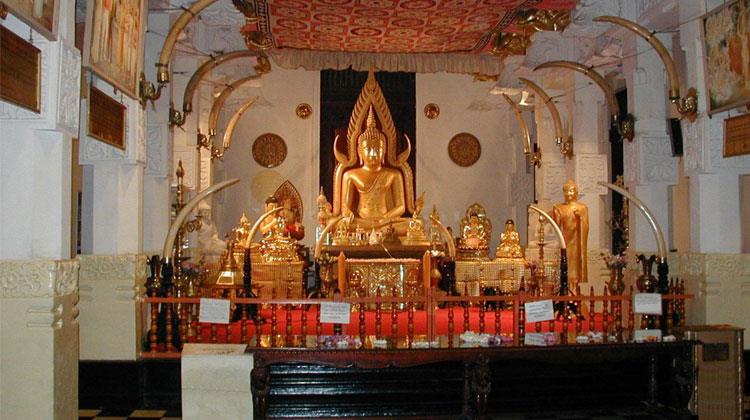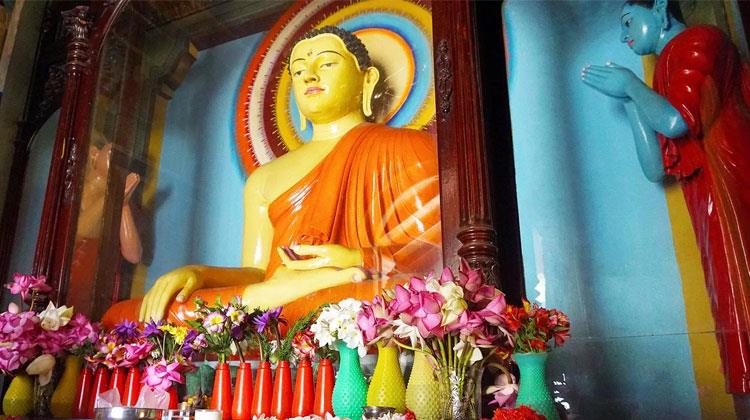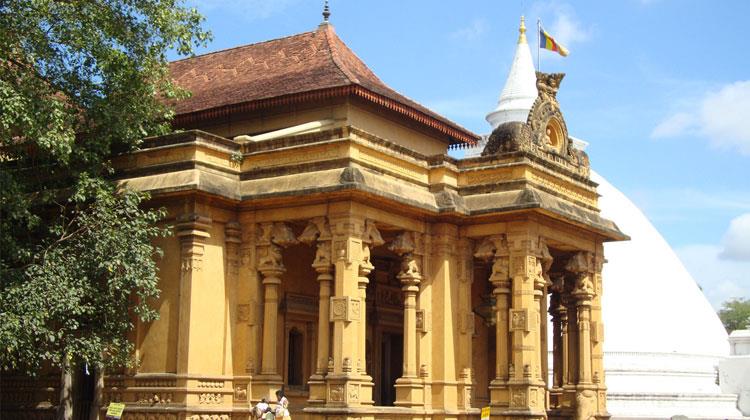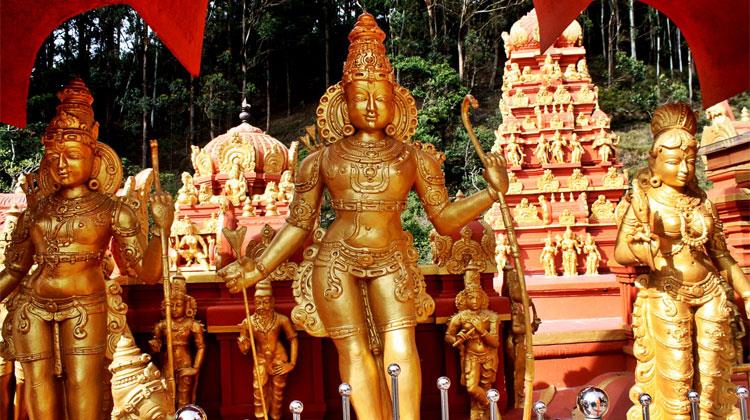Religious






Gangaramaya Vihara
Situated 61 Sri Jinaratana Road, Hunupitiya, Colobmo 2. The Temple developed modern period, after 1815 CE. This Buddhist temple includes several imposing buildings and is situated not far from the placid waters of Beira Lake on a plot of land that was originally a small hermitage on a piece of marshy land. It has the main features of a Vihara (temple), the Cetiya (Pagada) the Bodhitree, the Vihara Mandiraya, the Simamalaka and the Relic Chamber.In addition, a museum, a library, a residential hall, a three storeyed Pirivena, educational halls and an alms hall are also on the premises.
Tooth Temple
The Sacred Tooth Relic, which is housed at the Dalada Maligava in Kandy , is the most precious and venerated object for Buddhist in Sri Lanka . It is treated with the same reverence and dignity as a living Buddha.The Tooth is believed to be a left incisor of the Buddha. It is said that Khema Thera retrieved this relic from the Buddha’s funeral pyre and handed it over to King Bambadath of Dantha, Kalinga. It continued to be honoured and venerated under the many kings that followed. During the era of King Guhaseeva, a king of neighboring city waged war to claim ownership of the relic. Guhaseeva, who was fearful of the Sacred Tooth Relic falling in to enemy hands, instructed his daughter Princess Hemamala and her husband Price Dantha to smuggle it to Sri Lanka . So the relic arrived in Sri Lanka hidden inside the Princess’ hair and was handed over to Bhikku residing at Meghagiri Vihara. The Bhikku informed then the king of Anuradhapura , Krithisena Mevan of it , and the king received the Tooth Relic with much pomp and pageantry and built special premises to house it.
Vajiraramaya Temple
Vajiraramaya Temple is one of the best known Buddhist temples in Sri Lanka, serving not only as a place for worship, but also as a centre offering Buddhism classes for the youth. It was built in 1901 by a distinguished monk, Sri Vajiraramaya Maha Nayaka Thera, who originated from the southern part of the country.From here the local monks were spreading their beliefs to countries from the West, so the temple became an important religious spot for Buddhist worshippers and in 2009 it received the title of a sacred place.
Kelaniya Vihara
Situated about six miles from Colombo, set within a sacred area of around ten acres, the Kelani Vihara stands beside the Kelani river as evidence of a Buddhist tradition in this country.Most sacred worshipping places of the Buddhists of Sri Lanka since it is a site made hallowed by the visit of Lord Buddha. In the past Kelaniya itself was a large city and the Kelani Raja Maha Viharaya was one of the largest and one of the most beautiful temples of Sri Lanka.The spot on which this vihara stands derived its sanctity in the Buddhist era 2531, with the third visit of the Buddha to this country.The fact that the Buddha visited the spot on a Wesak day on the invitation of King Maniakkhika is given in the historic epics of Sri Lanka.
Embekke Devalaya
About 6krn (4 miles) southwest of Peradeniya and 3 km (2 miles) east of the main road to Nuwara Eliya, around 13km (8 miles) from the centre of Kandy, this small Buddhist temple dates from the 14th century and is graced by wooden columns elaborately sculpted with birds, dancers, acrobats and wrestlers. Open during daylight hours.Here is a small village called “Arathtana” which was, many moons ago in Sri Lanka, well known for its dancers and drummers. In this village lived a drummer who had a skin disease. He tried every possible treatment to rid himself of his problem, but none of them worked. Every medicine failed to cure him. He decided to go to the “temple of Katharagama”, a temple in the southern part of Sri Lanka. This temple was built for the god of Katharagama.
He went there and asked the god of Katharagama to cure his illness, promising to worship the temple annually. Then his illnesses were cured, and he kept his promise to Katharagama for many, many years.
Seetha Amman Temple
Seetha Amman Temple is located approximately 1 kilometre (0.62 mi) from Hakgala Botanical Garden and 5 kilometres (3.1 mi) from Nuwara Eliya. The temple is located in the village of Seetha Eliya (also known as Sita Eliya).This place is believed to be the site where Sita was held captive by (Vikram) king Ravana, and where she prayed daily for Rama to come and rescue her in the Hindu epic, Ramayana. On the rock face across the stream are circular depressions said to be the footprints of Lord Hanuman.
Great Trip with Great Company
